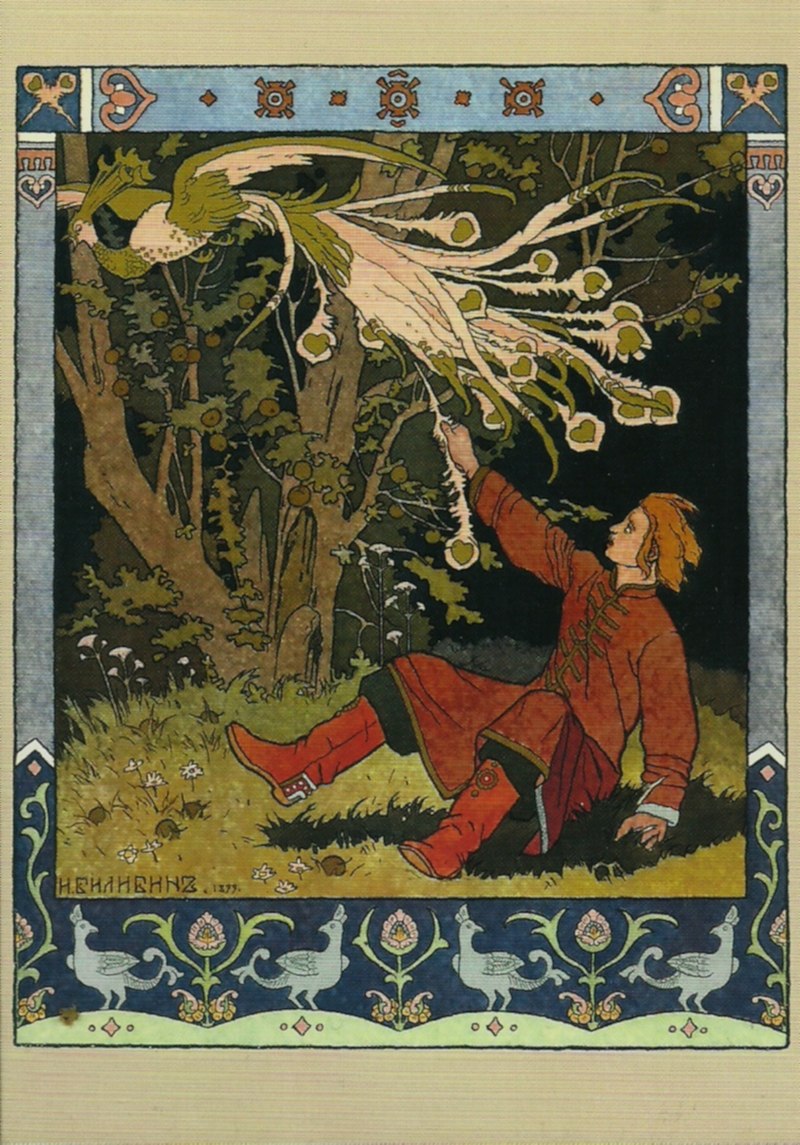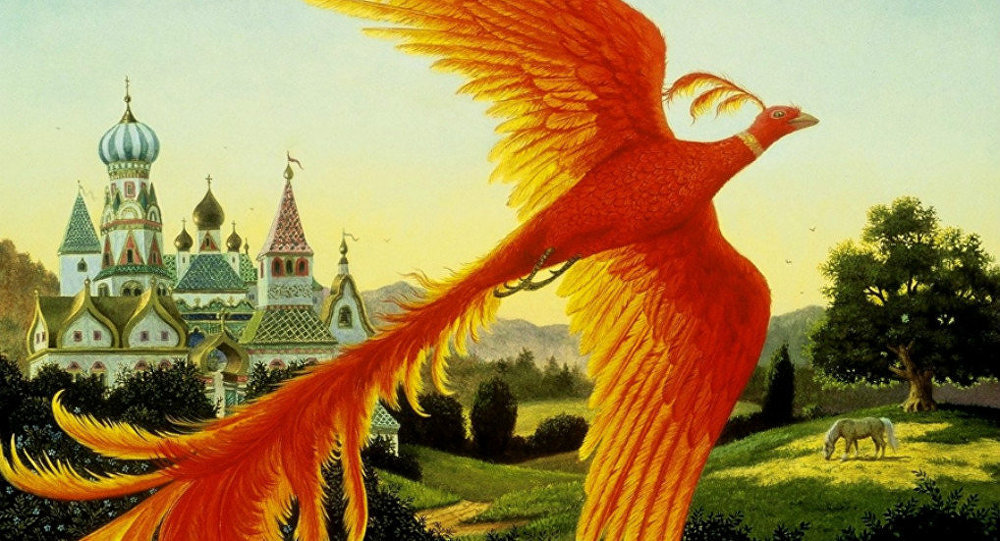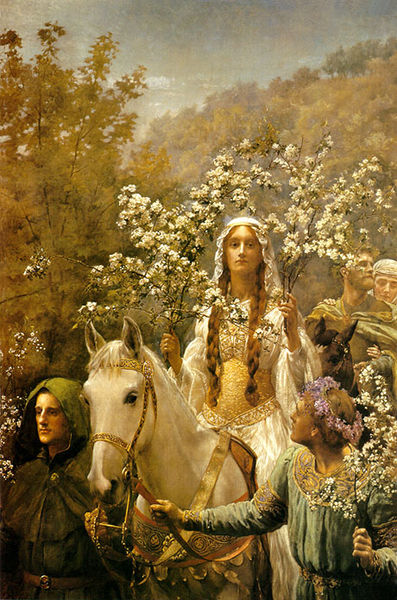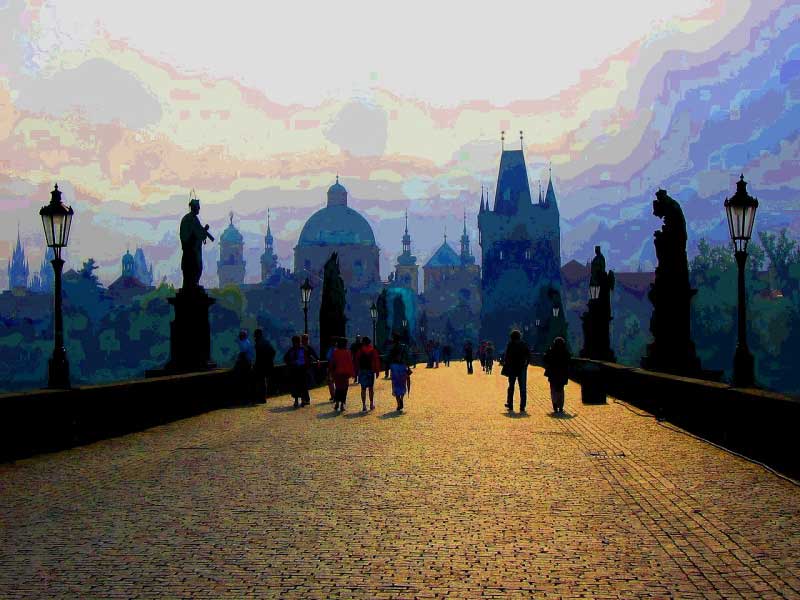
Ivan Bilibin’s illustration to a Russian fairy tale about the Firebird, 1899.
Russian composer Igor Stravinsky (1882-1971) was born on June 17 near St. Petersburg. Among his best known works, the ballets The Firebird (1910), Petrushka (1911) and The Rite of Spring (1913), and the choral work Symphony of Psalms (1930).
The Firebird character is one of the most poplar in Russian fairy tales. The Firebird is essentially a phoenix, a golden immortal bird that is reborn from its own incinerated ashes. Its flames and beauty save a variety of heroes and heroines–often princes and princesses–from evil wizards and devils, as in the famous Stravinsky ballet. Some tales say that the Firebird never eats but only sips dew. It saw Adam and Eve expelled from Paradise and is often a messenger between humans and the Otherworld.
One story about the Firebird tells us that a modest and gentle orphan girl named Maryushka lives in a small village. People would come from all over to buy her embroidery, and many merchants asked her to come away and work for them. She told them all that she would sell to any who found her work beautiful, but she would never leave the village of her birth. One day the evil sorcerer Kaschei the Immortal heard of Maryushka’s beautiful needlework and transformed himself into a beautiful young man and visited her. Upon seeing her ability he became enraged that a mere mortal could produce finer work than he himself possessed. He tried to tempt her by offering to make her Queen if she would embroider for him alone, but she refused saying she never wanted to leave her village. Because of this last insult to his ego he turned Maryushka into a Firebird, and himself into a great black Falcon, picked her up in his talons, and stole her away from her village. To leave a memory of herself with her village forever she shed her feathers onto the land below. As the last feather fell Maryushka died in the falcon’s talons. The glowing rainbow feathers were magic and remain undimmed, but show their colors only to those who love beauty and seek to make beauty for others
The Firebird concept has parallels in Iranian legends of magical birds, in the Brothers Grimm fairy tale about The Golden Bird. In an Armenian tale, the Firebird does not burn but rather makes the land bloom through its song. In Czech folklore, it is called Pták Ohnivák (Fire-like Bird) and appears, for example, in a Karel Jaromír Erben fairy tale, also as an object of a difficult quest. Moreover, in the beginning of this fairy tale, the bird steals magical golden apples belonging to a king and is therefore pursued by the king’s servants in order to protect the precious apples.



